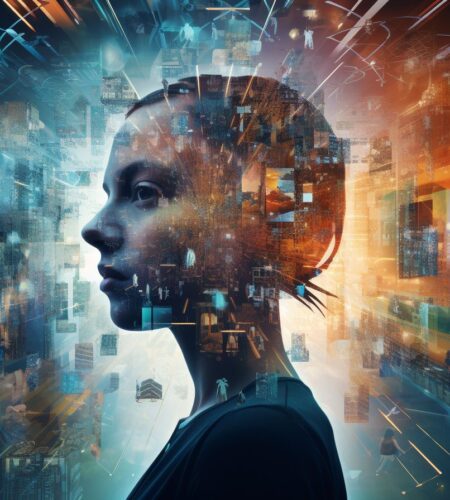Artificial Intelligence (AI) isn’t simply tool for automating mundane tasks or crunching big data—it’s making inroads into the world of creative arts. From generating abstract paintings to composing music, AI proves that creativity might not be a uniquely human trait. But what does this mean for the future of art? Could the next great artist be a machine? And more importantly, are we ready to accept AI as a legitimate creative force?
A Brief History of AI in Art
The intersection of AI and art isn’t as new as it might seem. Artists have been experimenting with computer-generated art since the 1960s, using algorithms to create visual patterns or explore new forms of expression. Algorithms like Generative Adversarial Networks (GANs) and neural networks, are the foundations of AI in art. But the AI of today is far more sophisticated than those early experiments, employing advanced techniques like deep learning and natural language processing.
In recent years, we’ve seen the rise of projects like Google’s DeepDream, which uses neural networks to create surreal, dreamlike images, and OpenAI’s DALL-E, which can generate incredibly detailed pictures from textual descriptions. These technologies are not just tools but creating entirely new art forms.
AI-Generated Art: Case Studies
One of the most famous examples of AI-generated art is the painting “Edmond de Belamy,” created by a Paris-based collective called Obvious using a Generative Adversarial Network (GAN). The piece, which resembles a distorted portrait of a European noble, was auctioned at Christie’s in 2018 for over $432,000—far exceeding expectations and sparking a debate about the value of AI-created art.
Another intriguing case is the music generated by AI. Projects like AIVA (Artificial Intelligence Virtual Artist) are composing original pieces of classical music, while AI-generated pop songs are beginning to make waves. In some cases, AI is even used to complete unfinished works by human composers, raising questions about authorship and originality.
Human vs. Machine Creativity
So, what distinguishes human art from machine-generated pieces? This question cuts to the heart of the debate about AI in the arts. Traditionalists argue that art is a profoundly human endeavor, rooted in emotion, experience, and cultural context—elements that a machine simply cannot replicate.
However, proponents of AI in the arts argue that machines bring something new to the table. They can analyze vast data, draw connections that might elude human artists, and create novel works. In this sense, AI isn’t replacing human creativity—it’s expanding the boundaries of what’s possible.
The Future of Creative Collaboration
Instead of viewing AI as a threat, many artists are embracing it as a tool to enhance their work. AI has the potential to assist with everything from generating ideas to refining techniques, offering a new way for humans and machines to collaborate. This collaboration can lead to new forms of expression that neither could achieve alone, sparking hope and optimism for the future of creativity.
For instance, artists can use AI to explore new styles, generate work variations, or even create interactive pieces that respond to the viewer in real-time. Musicians can use AI to compose new melodies or harmonize existing ones, pushing the boundaries of what music can be.
Ethical and Philosophical Implications
As AI becomes more involved in the creative process, it raises important ethical and philosophical questions. Who owns the rights to a piece of AI-generated art? Is it the programmer, the artist who trained the AI, or the AI itself? This question challenges our traditional understanding of authorship and ownership in art. And what happens when AI becomes so advanced that it can create art indistinguishable from human-made works? This scenario raises philosophical questions about the nature of creativity and the role of human intention in art.
There’s also the question of how AI might influence the art world. Will it democratize art, making it more accessible to those without traditional training? This potential for inclusivity can make the audience feel part of a changing art world, where everyone has the opportunity to create cutting-edge work.
As AI continues to evolve, it’s clear that it’s going to play an increasingly important role in tche creative arts. Whether we like it or not, AI is here to stay, and it’s already challenging our notions of what art can be.
The question isn’t whether AI can be creative—it’s whether we’re willing to accept its creations as art. As we navigate this new landscape, we’re challenged to rethink our definitions of creativity, originality, and what it means to be an artist in the digital age. This ongoing conversation can make the audience feel engaged and part of the evolving art world.


